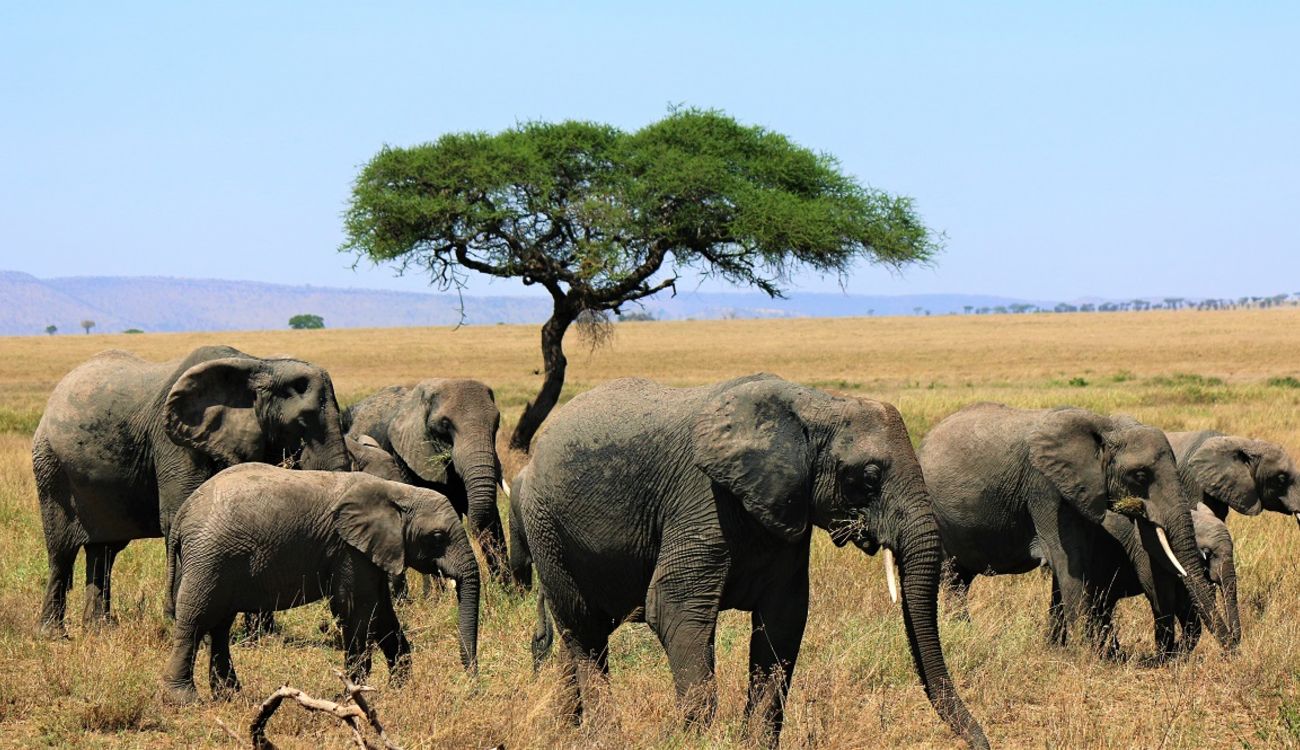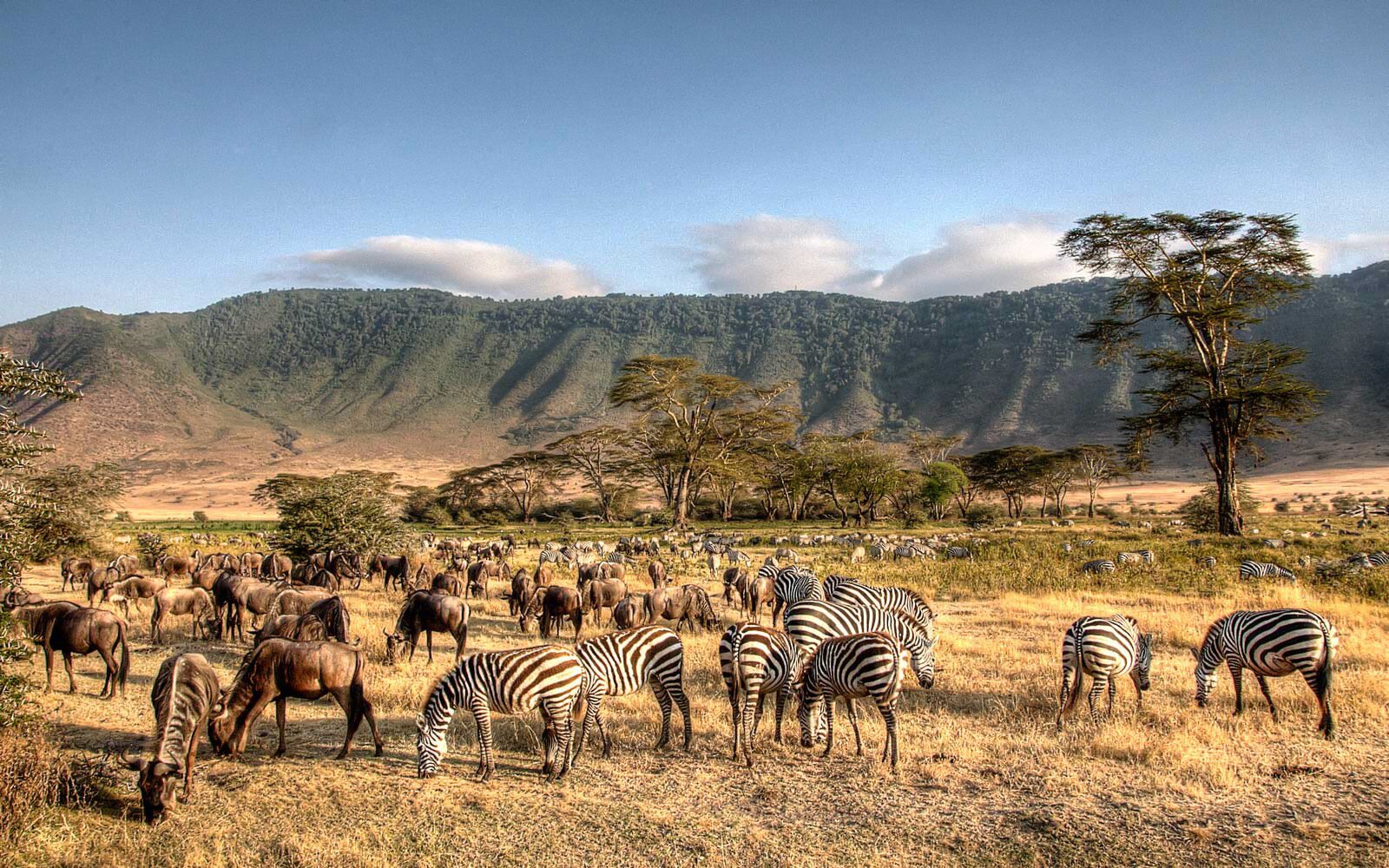2 Days 1 Night Hakuna Matata Safari Tarangire & Ngorongoro Crater




Embark on a captivating journey into the heart of Tanzania’s wilderness with our exclusive 2-day safari package. From the vast plains of Tarangire National Park to the dramatic landscapes of the Ngorongoro Crater, immerse yourself in the unparalleled beauty and rich biodiversity of East Africa. Each day promises thrilling wildlife encounters, breathtaking scenery, and moments of pure awe as you traverse some of Tanzania’s most iconic safari destinations. With expert guides and luxurious accommodations, prepare for an adventure of a lifetime as you explore the wonders of Tarangire and Ngorongoro.
Day 1: Arusha – Tarangire National Park
Embark on your exhilarating Tanzania safari with a journey from Arusha to Tarangire National Park, renowned for its magnificent elephant herds and iconic baobab trees. As the sun rises, the adventure unfolds amidst the sprawling savannahs and lush vegetation. A thrilling game drive awaits, offering glimpses of the park’s diverse wildlife, from majestic lions to graceful giraffes. The Tarangire River meanders through the landscape, drawing an abundance of animals to its banks, providing ample opportunities for memorable sightings and captivating photographs. After a day of exploration, retreat to your accommodation in Karatu, a tranquil haven nestled amid the scenic beauty of the Ngorongoro Highlands, where you can relax and rejuvenate, recounting the day’s adventures under the vast African sky.
Day 2: Ngorongoro Crater – Arusha
The dawn breaks over the Ngorongoro Crater, beckoning you to embark on an unforgettable safari experience. Descend into the heart of this ancient caldera, a sanctuary teeming with an extraordinary array of wildlife. The crater floor unfolds before you in all its splendor, offering encounters with Africa’s iconic creatures, from imposing lions to elusive black rhinos. Amidst the dramatic landscapes, enjoy a leisurely picnic lunch, surrounded by the sights and sounds of nature at its most pristine. As the day progresses, bid farewell to this natural wonder, filled with memories that will linger long after your journey back to Arusha. Reflect on the beauty and majesty of Tanzania’s wildlife as you return to the bustling city, a fitting conclusion to an unforgettable safari adventure.
Activities/services included in the cost:
- Accommodation as per the itinerary
Lodges on Full Board - Road transportation in 4wd land Cruiser safari vehicle
Game drives as per the itinerary - Park entrance fees and crater service fees
- English Speaking guides available for the safari
- Accommodation as per the itinerary
Activities/services excluded in the cost:
- Visit to Masai Cultural Village
- All International Flights/local Flights + Taxes
- Visa fees, Travel & Personal accident insurance
- Excursions, services and activities not mentioned in this program
- Personal expenses e.g. laundry, telephone calls, Drinks, Tips and gratuities
Passenger Information
- Passengers should bring only duffle bags safaris{not suitcases}
- All the passengers must have Identification Card/Passport with them for internal flights.
- Baggage on domestic flights is strictly limited to 15kgs per person (including hand luggage). Any excess baggage will be charged by the airline at check-in.
- Passengers arriving to Tanzania may be asked to present a valid Yellow Fever Vaccination Certificate
- Tourist Visa will be obtained at the entry points, but it is advisable to double check before travelling to Tanzania.
What is the best time of year to go on a safari in Tanzania? The best time for a safari in Tanzania depends on your preferences. The dry season (June to October) is ideal for wildlife viewing as animals gather around water sources, but it’s also the busiest time. The wet season (November to May) offers lush landscapes and fewer tourists, but wildlife may be harder to spot due to thick vegetation.
What should I pack for a safari in Tanzania? Essential items include lightweight and neutral-colored clothing, sturdy walking shoes, a wide-brimmed hat, sunscreen, insect repellent, binoculars, a camera with extra batteries and memory cards, and any necessary medications. It’s also advisable to pack layers as temperatures can vary throughout the day.
Do I need a visa for Tanzania? Most visitors to Tanzania require a visa, which can be obtained upon arrival at the airport or purchased online in advance. Visa requirements vary depending on your nationality, so it’s important to check the latest information before traveling.
Is it safe to go on a safari in Tanzania? Tanzania is generally safe for tourists, including safaris, but it’s important to take standard precautions such as staying updated on travel advisories, avoiding isolated areas at night, and following the guidance of your tour guides.
What types of accommodations are available on safari? Accommodation options range from luxury lodges and tented camps to budget-friendly campsites. Luxury lodges typically offer comfortable amenities such as en-suite bathrooms, gourmet meals, and swimming pools, while tented camps provide a more authentic safari experience with canvas tents and communal dining areas.
What wildlife can I expect to see on safari in Tanzania? Tanzania is home to a diverse array of wildlife, including the Big Five (lion, elephant, buffalo, rhino, and leopard), as well as cheetahs, giraffes, zebras, wildebeests, hippos, crocodiles, and a variety of bird species. The specific animals you’ll encounter will depend on the location and time of year.
Are safaris suitable for children? Many safari operators offer family-friendly safari options, including accommodations with family rooms, shorter game drives, and child-friendly activities. However, it’s important to consider the age and interests of your children when planning a safari and to choose activities that are suitable for them.
What is the typical duration of a safari in Tanzania? Safari durations can vary depending on your preferences and itinerary. Most safaris range from a few days to a week or more, with shorter safaris focusing on specific national parks or wildlife areas and longer safaris covering multiple destinations. Customized itineraries are also available to suit individual preferences and schedules.
